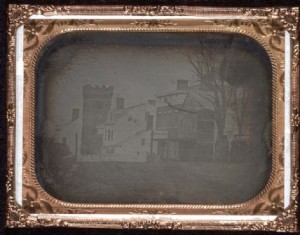
Figure 1 – Early American daguerreotype by Samuel F.B. Morse and John Draper 1839/1840 showing the Unitarian Church on Washington Square from the roof of the old NYU building. Image is in the public domain.
I mentioned that William Brady studied photography under Samuel F. Morse (1791-1872), who introduced the Daguerreotype to America in 1839. That may be a bit surprising. Most of us remember Morse as the inventor of the Morse code and the telegraph. However, if you take a trip to a Museum like the Museum of Fine Arts in Boston, you will realize that Morse was a skilled portrait painter. What was he an artist or a scientist-inventor?
The answer to that question takes us to a remarkable book by historian Paul Johnson, “The Birth of the Modern, World Society 1815 – 1830.” Johnson targets the period between 1815 and 1830 as marking the pivotal transition of world society into the modern world. This marked the transition into a scientific society. As Johnson shows, a key factor was the development during this period of both the McAdamized road and the steamboat. Of course, the key here was the evolution of the shrinking world, the speedier and speedier communication of ideas. We have in due course:
- The postal service
- The railroad
- The telegraph
- The telephone
- Wireless communications
- The automobile
- Radio
- The airplane
- Television
- The computer
- The internet
They all stem from the revolution set in place by this critical fifteen year period in human history.
And there is something else that happened at that moment, something that answers the question of whether Samuel F. B. Morse was a scientist or an artist. Up until that time, as the scientific revolution developed men and women of intellect could
consider themselves to be both. In the footsteps of Leonardo, Daguerre and Morse could, and were, both. Science was, as much, as any art, a humanity.
Allow me to quote Johnson directly (last page of chapter seven):
“So too, he (the artist Turner) felt an affinity with Faraday; they were both experimentalists, working skillfully with their hands as much as with their eyes and their brains, to explore the physical secrets of the world.”
“But as the 1820s progressed, it became harder to maintain that all men of genius could speak to one another. There was a sad moment at Lowther Castle in 1827, when Sir Humphrey Davy and William Wordsworth met for the last time. Wordsworth later complained to a correspondent that it had no longer been a meeting of kindred spirits: ‘His scientific pursuits had hurried his mind into a course where I could not follow him, and had diverted it in proportion from objects with which I was best acquainted.’ The parting of the ways between art and science, the bifurcation into two – indeed into many cultures was only one aspect of modernity.”
This then is the key to understanding the invention of photography. Men like Daguerre, Morse, and Talbot saw themselves, in the finest tradition of men of genius, in their times, as both scientists and artists. There was no ambiguity or dichotomy in that view.

Pingback: Samuel F. B. Morse, Louis Daguerre, and the birth of photography | Hati and Skoll Gallery